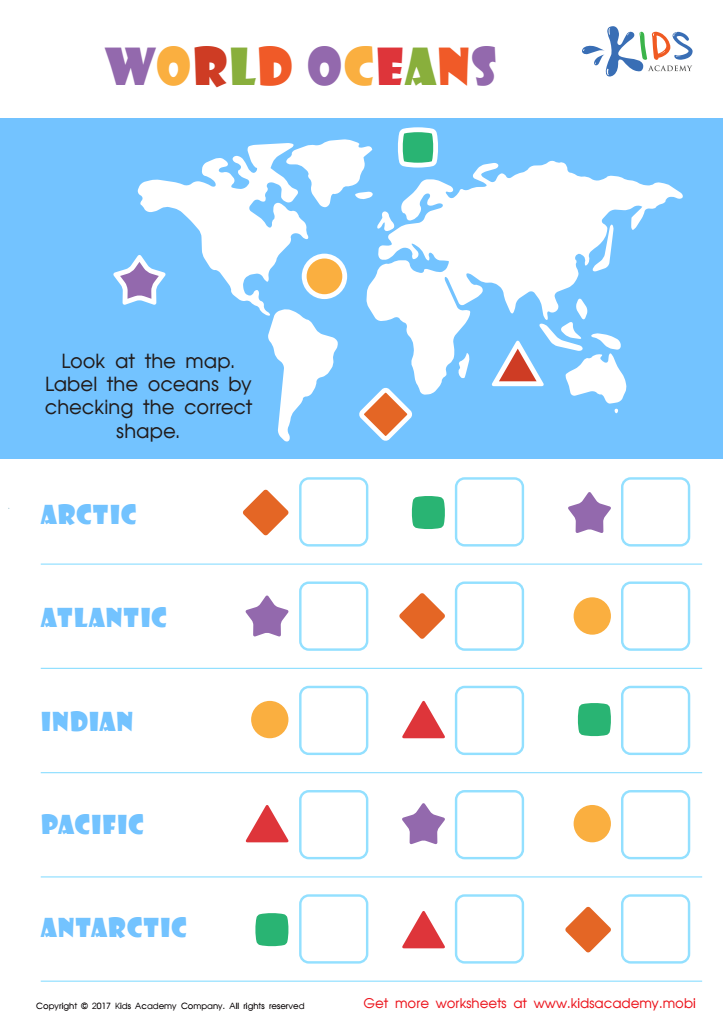Compass reading skills Worksheets for Kids
1 filtered results
-
From - To


World Oceans Printable
Question/Answer
What does the Compass reading skill mean when it comes to Grade 2 Geography learning?
The Compass reading skill in Grade 2 Geography involves teaching children how to identify the four cardinal directions (north, south, east, and west) using a compass. It aims to familiarize students with basic navigational tools and concepts, enabling them to understand and use directions in relation to their surroundings, maps, and globes.
How to test a Grade 2 student’s Compass reading skills?
To test a Grade 2 student's compass reading skills, use a simplified compass rose with the four cardinal directions (North, East, South, West). Ask the student to identify the directions on the compass rose. Then, using a real or toy compass, have the student practice pointing to the four cardinal directions based on where the compass needle indicates North is.
How does the mastery of the Compass reading skill affect a student's performance at an early age?
Mastery of the Compass reading skill at an early age significantly enhances a student's performance by improving their spatial awareness, orientation skills, and ability to navigate and understand maps. This foundational skill sets the stage for better comprehension in subjects like geography, mathematics, and sciences, fostering critical thinking and problem-solving abilities from a young age.
 Assign to the classroom
Assign to the classroom












